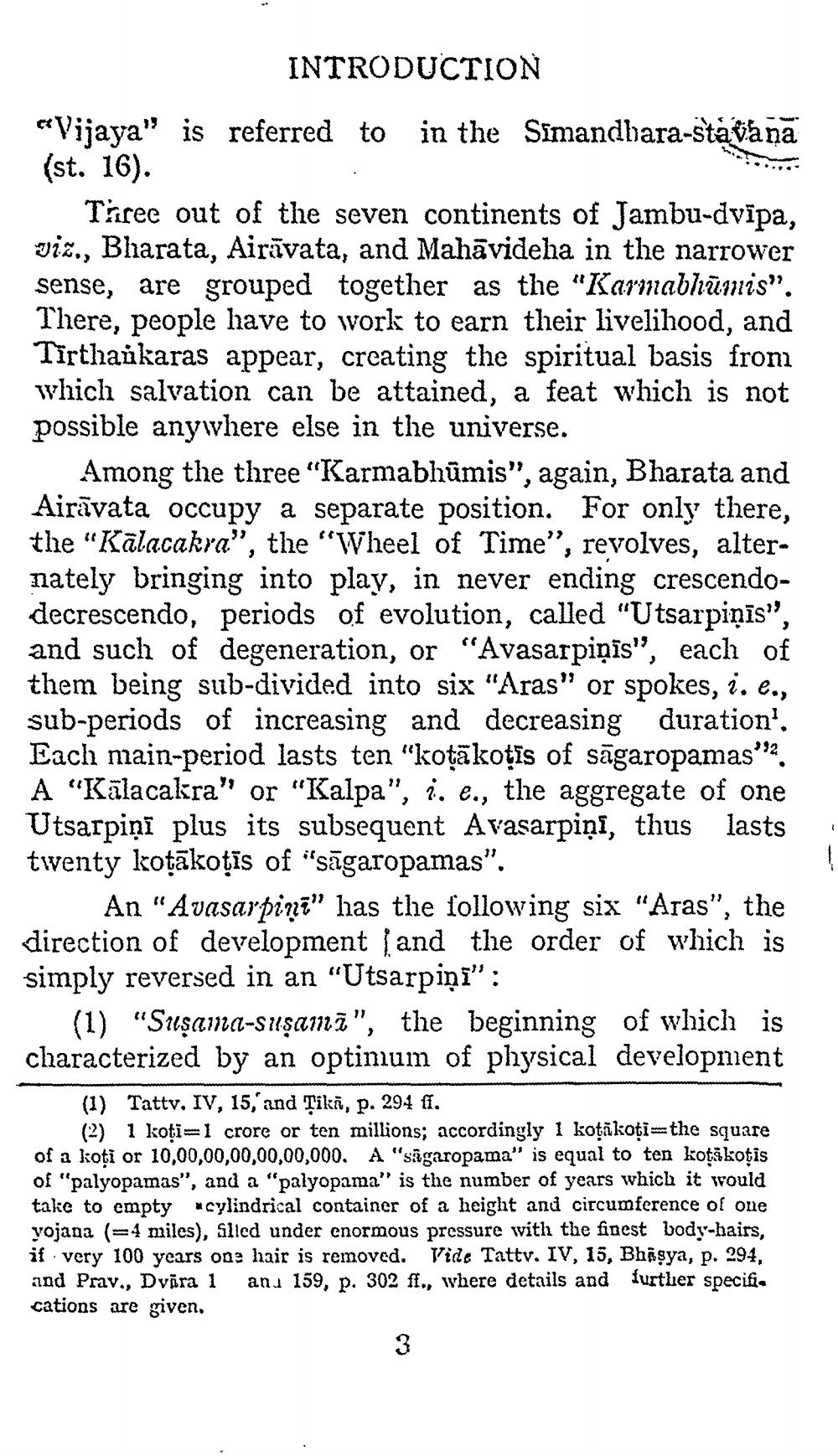________________
INTRODUCTION
“Vijaya" is referred to in the Simandhara-stavana (st. 16).
Tree out of the seven continents of Jambu-dvīpa, viz., Bharata, Airāvata, and Mahāvideha in the narrower sense, are grouped together as the "Karmabhūnnis". There, people have to work to earn their livelihood, and Tirthaikaras appear, creating the spiritual basis from which salvation can be attained, a feat which is not possible anywhere else in the universe.
Among the three "Karmabhūmis", again, Bharata and Airāvata occupy a separate position. For only there, the "Kālacakra”, the “Wheel of Time”, revolves, alternately bringing into play, in never ending crescendodecrescendo, periods of evolution, called "Utsarpiņīs", and such of degeneration, or "Avasarpiņis", each of them being sub-divided into six "Aras" or spokes, i. e., sub-periods of increasing and decreasing duration'. Each main-period lasts ten "kotākotīs of sāgaropamas". A "Kālacakra" or "Kalpa", 1. e., the aggregate of one Utsarpiņi plus its subsequent Avasarpiņi, thus lasts twenty kotākotīs of ''sāgaropamas".
An "Avasarpinī" has the following six "Aras", the direction of development and the order of which is simply reversed in an "Utsarpiņi":
(1) "Suşama-sışanā", the beginning of which is characterized by an optinium of physical development
(1) Tattv. IV, 15, and Țikā, p. 294 fi.
(2) 1 koti=1 crore or ten millions; accordingly 1 kotākoti=the square of a koti or 10,00,00,00,00,00,000. A "sägaropama" is equal to ten kotikotis of "palyopamas”, and a "palyopama" is the number of years which it would
take to empty cylindrical container of a height and circumference of one vojana (=4 miles), Slied under enormous pressure with the finest body-hairs, if very 100 years ons hair is removed. Vide Tattv. IV, 15, Bhagya, p. 294, and Prav., Dvira 1 an 159, p. 302 ff., where details and further specifi. cations are given.




